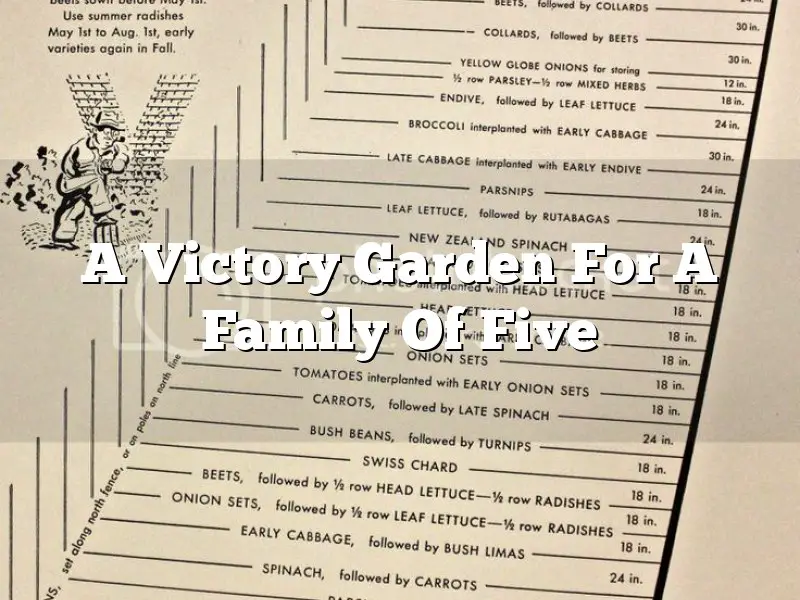This illustrated picture of a A Victory Garden For A Family Of Five on a plot of by 25 by 50 feet is a guide of how people grew a large garden harvest of fruits and vegetables on a small piece of land.
Victory gardens, also called war gardens or food gardens for defense, were vegetable, fruit, and herb gardens planted at private residences and public parks in the United States, United Kingdom, Canada, and Germany during World War I and World War II. They were used along with food stamps (rations) to reduce pressure on the public food supply. Around one-third of the vegetables produced by the United States came from victory gardens. Besides indirectly aiding the war effort, these gardens were also considered a civil “morale booster” in that gardeners could feel empowered by their contribution of labor and rewarded by the produce grown. This made victory gardens a part of daily life on the home front as quoted by wikipedia.
Fun Facts About Victory Gardens:
During World War II, Victory Gardens were planted by families in the United States (the Home Front) to help prevent a food shortage.
In 1941, a five-foot Christmas tree could be purchased for 75 cents.
Planting Victory Gardens helped make sure that there was enough food for our soldiers fighting around the world. Because canned vegetables were rationed, Victory Gardens also helped people stretch their ration coupons (the amount of certain foods they were allowed to buy at the store).
Because trains and trucks had to be used to transport soldiers, vehicles, and weapons, most Americans ate local produce grown in their own communities.
Many different types of vegetables were grown-such as tomatoes, carrots, lettuce, beets, and peas. Victory Gardens were responsible for bringing Swiss chard and kohlrabi onto the American dinner table because they were easy to grow.
At their peak there were more than 20,000,000 Victory Gardens planted across the United States.
By 1944 Victory Gardens were responsible for producing 40% of all vegetables grown in the United States. More than one million tons of vegetables were grown in Victory Gardens during the war.
People with no yards planted small Victory Gardens in window boxes and watered them through their windows. Some city dwellers who lived in tall apartment buildings planted rooftop gardens and the whole building pitched in and helped.
Many schools across the country planted Victory Gardens on their school grounds and used their produce in their school lunches.
The U.S. government printed recipe books describing how to prepare home grown vegetables to make nutritional and tasty meals. Agricultural companies gave tips on how to make seedlings flourish in different climates.
Excess food grown in Victory Gardens was canned and used during the winter months to help supplement the amount of food available.
Growing Victory Gardens gave Americans on the Home Front a feeling that they were doing something helpful to win the war as quoted by the The National World War 2 Museum.



